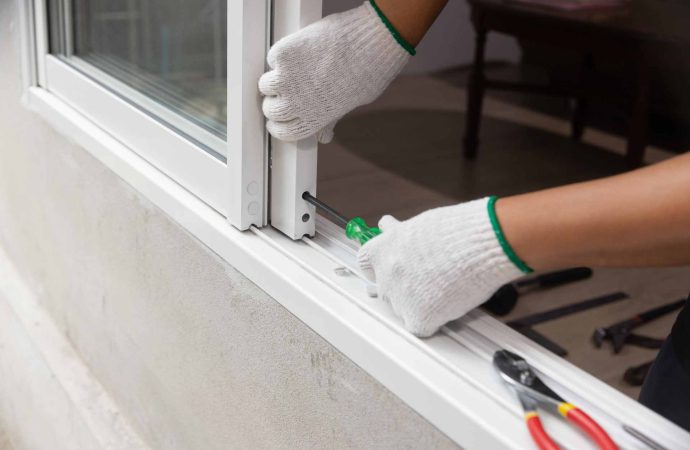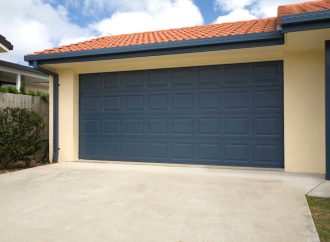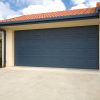Maintaining your replacement windows and doors properly is critical to ensuring their longevity, performance, and aesthetic appeal. You can properly care for your windows and doors by following these five important practices, minimising possible damage and maximising their longevity. 1. Regular Cleaning Regular cleaning is essential for efficiently keeping your replacement windows and doors, ensuring
Maintaining your replacement windows and doors properly is critical to ensuring their longevity, performance, and aesthetic appeal. You can properly care for your windows and doors by following these five important practices, minimising possible damage and maximising their longevity.
1. Regular Cleaning
Regular cleaning is essential for efficiently keeping your replacement windows and doors, ensuring their lifespan, performance, and visual charm. By devoting time and attention to this important chore, you can avoid the collection of dirt, dust, and grime, which may possibly harm and degrade the general function of your windows and doors. Regular cleaning not only improves the cosmetic attractiveness of your windows and doors, but it also protects their structural integrity. You may carefully remove any pollutants that have settled on the surfaces of the frames, glass panels, and hardware by using a mild, non-abrasive cleaning and a cautious approach. This painstaking attention to detail guarantees that no nooks or crannies are missed, resulting in a thorough cleaning experience. It is critical to use a mild, non-abrasive cleanser to avoid abrasive particles damaging or degrading the surfaces of your windows and doors. Using mild cleaning chemicals formulated exclusively for window and door materials ensures that their natural lustre and finishes are preserved. Aside from the cosmetic benefits, frequent cleaning helps to preserve the performance of your new windows and doors. Dust and dirt can collect within devices such as hinges, locks, rollers, and tracks, causing them to malfunction. By eliminating dirt and grime from these moving parts on a regular basis, you can reduce friction and avoid wear and tear that may impair their functioning over time. Furthermore, frequent cleaning helps to maintain the general cleanliness and hygiene of your living area. Removing dust and allergens that build on your windows and doors promotes a healthier interior environment, lowering the risk of respiratory difficulties or allergies caused by long-term exposure to these pollutants. While it is essential to emphasise frequent cleaning, it is also critical to take prudence and avoid using strong chemicals. Abrasive cleaning products can permanently damage, discolour, or deteriorate the surfaces of your windows and doors. By using gentle, non-abrasive cleansers, you prioritise their preservation and ensure they retain their natural beauty and usefulness.
2. Lubrication of Moving Parts
The diligent lubrication of your new windows and doors’ moving parts is an important approach for maintaining their extended lifespan. This maintenance practise not only encourages smooth functioning, but it also protects against needless wear and tear, protecting the overall functionality and durability of these critical architectural features.
Lubricating the moving elements of your windows and doors is critical for reducing friction, which may cause undue strain and damage over time. You may efficiently minimise resistance by adding a high-quality silicone-based lubricant to hinges, locks, rollers, and tracks, allowing for simple movement and operation. This lubricating procedure generates a smooth and efficient mechanism, reducing the likelihood of stiffness, sticking, or jamming, which can impair the performance of your windows and doors. The prudent application of lubricants ensures that the moving components within your windows and doors continue to work optimally, reducing undue strain on the hardware and enhancing its longevity. Lubrication, by minimising friction, considerably reduces the wear and tear that might arise from continuous use, hence increasing the lifespan of these critical architectural components. Furthermore, lubrication serves as a barrier against external factors and corrosive compounds that might harm the moving parts of your windows and doors. This barrier keeps moisture, dust, and debris out of the mechanisms, lowering the risk of rust, corrosion, and other types of degradation. By lubricating these components on a regular basis, you build a defence system that protects against the damaging impacts of the surrounding environment, protecting the integrity and durability of your windows and doors. Precision and attention to detail are required while lubricating your new windows and doors. To guarantee compatibility and optimum performance, use a silicone-based lubricant particularly intended for windows and doors. Applying the lubricant to the proper places, such as the hinges, locks, rollers, and tracks, guarantees consistent distribution without excess accumulation, eliminating possible mess and interference with the smooth working of these parts. Regular lubrication is necessary, but it is also critical to establish a balance between regularity and excess. Excessive lubrication might attract dust and debris, resulting in blockage and other difficulties. As a result, following manufacturer guidelines and contacting specialists when needed will allow you to develop an effective maintenance regimen that meets the unique demands of your replacement windows and doors.
3. Weatherstripping Maintenance
Weatherstripping maintenance is an important part of properly caring for your new windows and doors, as it contributes considerably to their lifetime and general performance. Weatherstripping acts as a barrier, preventing air leakage, moisture penetration, and undesired materials such as dust, dirt, and noise from entering. You can assure maximum performance and energy efficiency while protecting the structural integrity of your windows and doors by regularly maintaining the weatherstripping. First and foremost, it is critical to evaluate the weatherstripping on a regular basis. Examine the quality of the seals that surround your windows and doors thoroughly. Examine them for indications of wear, cracking, or separation that might jeopardise their efficacy. You can prevent additional damage and preserve the long-term efficiency of your windows and doors by detecting and resolving these concerns as soon as possible. If any holes or cracks are discovered, the weatherstripping must be repaired or replaced as soon as possible. Depending on the amount of the damage, you may choose to fix minor flaws or totally replace worn-out pieces. Use high-quality weatherstripping materials that are custom-made for your windows and doors to ensure a perfect fit and excellent insulation. Furthermore, thorough weatherstripping cleaning is critical to its functioning and lifespan. Dirt, dust, and debris can collect on the seals over time, impairing their capacity to establish a tight seal. Wipe off the weatherstripping with a soft cloth and a mild, non-abrasive cleanser on a regular basis to remove any accumulation and restore its efficacy. Avoid using strong chemicals or abrasive products that might harm or deteriorate the surface. Furthermore, keeping the weatherstripping in good condition necessitates proactive actions to minimise moisture buildup and potential damage. Check for any moisture sources, such as leaks or condensation, in the region around the weatherstripping. If there is excessive moisture, treat the underlying cause as soon as possible to avoid mould, rot, or deterioration. You can extend the life of your new windows and doors by keeping a dry atmosphere and preventing moisture penetration.
4. Proper Ventilation
Proper ventilation is essential for maintaining the lifespan of your new windows and doors. You can protect their structural integrity, reduce the danger of moisture-related damage, and maintain their usefulness and aesthetic appeal by creating a well-ventilated atmosphere. Ventilation is critical in combating the negative impacts of retained humidity, condensation, and stagnant air in your living environment. If these concerns are not addressed, they can lead to a variety of difficulties, including mould growth, decay, degradation, and decreased performance of your windows and doors. Efficient ventilation is critical for maintaining a healthy balance of moisture levels and preventing excessive humidity from permeating your house. By enabling fresh air to flow, ventilation acts as a natural barrier against moisture buildup, which may seep into window frames, door jambs, and surrounding buildings and cause significant damage over time. Optimal ventilation not only protects against moisture damage but also helps to maintain the general condition and look of your new windows and doors. Adequate ventilation aids in the dissipation of any fumes, odours, or pollutants that may gather within your house, decreasing the chance of tarnishing, discoloration, or unpleasant odours that might affect the aesthetic attractiveness of your windows and doors. A multifaceted strategy is required to maintain optimal ventilation. Opening windows and doors on a regular basis, especially during mild weather, allows fresh air to enter while allowing stale air and moisture to go. This easy yet powerful practice not only refreshes the air in your home, but it also enhances the general health and durability of your windows and doors. Consider installing supplemental ventilation systems, such as exhaust fans or air purifiers, to improve air circulation and maintain a comfortable environment. These systems aid in the removal of excess moisture, cooking odours, and other pollutants, extending the life of your new windows and doors by avoiding potential damage caused by extended exposure to dangerous factors.
5. Regular Inspection
Regular inspections are essential for ensuring the maximum maintenance and lifetime of your new windows and doors. You can protect the functioning, structural integrity, and aesthetic appeal of these important aspects of your house by undertaking thorough evaluations at regular intervals. The importance of routine inspection stems from its capacity to reveal latent flaws that would otherwise go unreported. By taking the time to properly inspect your new windows and doors, you will be able to detect even the smallest fractures, chips, or damage to the glass panes, frames, or hardware. Such awareness allows you to recognise early warning signals that, if ignored, might lead to more serious problems. A comprehensive examination of the seals and caulking surrounding the windows and doors is critical throughout the inspection procedure. These seals serve as a barrier to moisture ingress, draughts, and air leakage. You can guarantee the integrity of the seals by closely examining their condition and addressing any gaps, fractures, or degeneration as soon as possible. Repairing or replacing defective seals will not only preserve energy efficiency, but will also avoid moisture-related damage such as mould development, decay, and structural weakness. Regular inspections are an excellent opportunity to evaluate the general operation of your new windows and doors. You can detect wear, friction, and misalignment by inspecting the hinges, locks, rollers, and tracks. To reduce friction and guarantee smooth functioning, various moving parts may need to be lubricated. Addressing such concerns quickly can not only improve usability but will also prevent additional damage to these critical components, extending the life of your windows and doors. Regular inspections also allow homeowners to assess the visual quality of their new windows and doors. The look of these features has a big impact on your home’s overall curb appeal and aesthetic attractiveness. You can quickly restore the purity and attractiveness of the glass panes by inspecting them for scratches, stains, or fogging. Inspecting the frames for discoloration, peeling, or degradation also enables for prompt repairs or refinishing, keeping the appealing appearance of your windows and doors. It is critical to understand that frequent inspections should not be limited to a visual check of your windows and doors. Hiring a professional technician or contractor for full inspections can give an expert viewpoint and reveal any underlying concerns that an unskilled eye may miss. These experts have the knowledge to evaluate the structural integrity, energy efficiency, and safety features of your windows and doors, assuring complete maintenance and peace of mind.
By including these six practices into daily routine, you can ensure the lifespan of your replacement windows and doors. Cleaning, lubrication, weatherstripping maintenance, ventilation, frequent inspections, and seasonal care will surely extend the life and performance of your windows and doors, providing you with comfort, energy efficiency, and aesthetic appeal for many years to come.

















